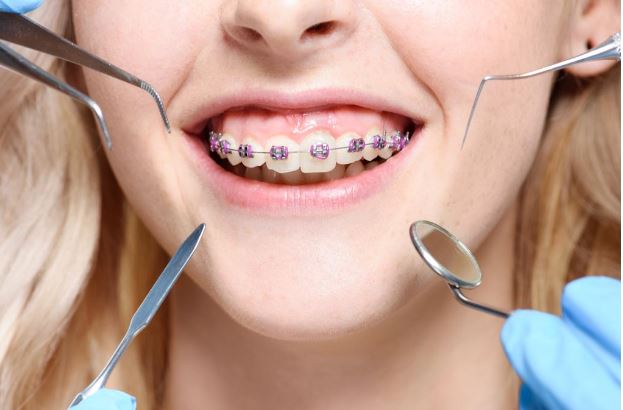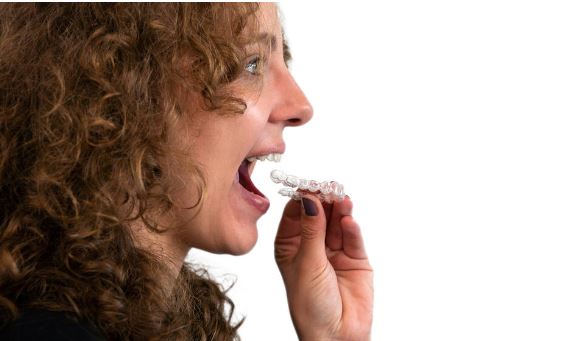Braces Improve Your Oral Health and Appearance
Teeth braces have been a popular orthodontic treatment for decades, used to correct crooked teeth and improve the overall health of one’s mouth. Braces can be a time-consuming process, but the end result is typically worth it. Not only do people with braces experience improved oral hygiene, but they also can enjoy straighter teeth along with an enhanced smile. This article will explore the teeth brace journey before and after braces are applied, as well as provide tips on how to best prepare for this life-changing process.
Benefits of Teeth Braces
Braces are an increasingly popular orthodontic treatment to help improve the appearance and function of your teeth. While traditional metal braces are still commonly used, more modern and discreet options such as ceramic braces, lingual braces, Invisalign®, and other alternative treatments can also be used to straighten teeth. Whatever type of braces you decide to use, there are many benefits associated with having them in place. Adult braces before and after demonstrating a noticeable difference in the alignment of teeth, resulting in a straighter, more symmetrical smile.
One of the most obvious advantages is that braces can improve the aesthetic appearance of your smile by straightening crooked or crowded teeth. Straight teeth can make a huge difference to how you feel about yourself when smiling or talking with others – something that many people who have had their teeth straightened have reported experiencing for themselves.
But aesthetics are not the only benefit associated with wearing braces: straighter teeth also help promote better oral health because they’re easier to clean and floss around than crooked or misaligned ones. This means there’s less chance of plaque buildup and cavities developing over time due to poor oral hygiene habits – something that can be especially important for younger patients who may not yet understand the importance of good dental care habits.
Different Types of Teeth Braces
Teeth braces are a common orthodontic treatment used to straighten and align teeth. Braces come in a variety of styles, shapes, and sizes, each with its own unique benefits and drawbacks. Depending on your specific orthodontic needs, your dentist or orthodontist may recommend one type of braces over another. In this article, we will discuss the different types of teeth braces available so you can make an informed decision about which type is right for you.
Traditional Metal Braces: These are the most common type of braces and consist of metal brackets attached to the front surfaces of each tooth with archwires connecting them all together. They work by applying gentle pressure to the teeth over time in order to move them into their desired position. Traditional metal braces are usually made from stainless steel, but they can also be made from titanium or gold for a more aesthetic look.
Ceramic Braces: These are similar to traditional metal braces except that they use clear ceramic brackets instead of metal ones which makes them less noticeable than traditional brace systems. They work in exactly the same way as regular metal braces but because they’re less visible on the teeth, many people find this option more attractive for cosmetic reasons.
Health Considerations When Getting Teeth Braces
Getting braces is an exciting time for many people, as it marks the beginning of a journey toward a more aesthetically pleasing and healthier smile. However, there are some important health considerations to keep in mind before making the decision to get braces.
The first consideration is the type of braces you choose. Different types of braces offer different levels of comfort and effectiveness. Metal brackets are typically more affordable but may be uncomfortable or noticeable due to their size and shape, while ceramic brackets can blend in better with your teeth but may be more expensive. Your orthodontist can help you decide which type of braces will work best for your mouth and lifestyle needs.
Next, check on any dietary restrictions that come with wearing braces. Your orthodontist will likely recommend avoiding certain chewy or sticky foods that could damage the brackets or wires – like gum, hard candies, and crunchy snacks – as well as acidic drinks like soda that could corrode metal components over time. Cutting down on sugary foods can also help minimize plaque buildup around the brackets, reducing your risk for tooth decay while wearing braces.
What to Expect After Getting Braces Installed
Getting braces installed can be an exciting but nerve-wracking experience. While you may be looking forward to finally having your teeth straightened, it’s important to know what to expect after getting braces installed so that you can adequately prepare for the process. This article will provide an overview of what to expect after getting braces installed so that you can ensure a successful orthodontic treatment plan.
Immediately After Installation: After your braces are fitted, there likely will be some slight discomfort or soreness around your mouth and teeth as they adjust to the new appliance. Your orthodontist may suggest taking over-the-counter pain relievers or applying a cold compress on the area for relief. It’s also normal for your lips, tongue, and cheeks to become irritated by the brackets and wires during this time period; talk with your orthodontist about waxes or other products that may help alleviate this discomfort.
The First Follow-Up Appointment: You will typically have follow-up appointments scheduled every four to eight weeks following the installation of your braces depending on how quickly they are expected to move.
Ongoing Care and Maintenance with Teeth Braces
Maintaining healthy teeth and a beautiful smile is essential for your overall health and well-being. If you have recently had braces, put in place to straighten your teeth, ongoing care and maintenance are necessary to ensure that the treatment works correctly and produces the desired results.
When it comes to caring for teeth with braces, there are some important steps you can take. This includes brushing your teeth after every meal or snack, flossing at least once a day, using an interdental brush or water flosser specifically designed for braces, drinking plenty of water throughout the day to keep your mouth hydrated, avoiding sticky foods like gum that can get stuck in between brackets or wires of your braces, and avoiding hard foods such as nuts. Additionally, it’s recommended that you visit an orthodontist on a regular basis so they can check on how well the treatment is progressing.
To ensure optimal results from having braces fitted there are also some things you should avoid doing including chewing on pens or pencils which can cause damage to brackets or wires; eating hard candy which may break off pieces of the brace; biting down too hard when eating which may cause permanent damage; playing contact sports without wearing the proper protection such as a mouthguard.
Teeth braces before and after can make a dramatic difference in the look of someone’s teeth. Braces can help realign teeth, close gaps between them, and create a straighter, healthier smile. With proper care and regular visits to the orthodontist, braces can be a great investment for improved dental health and aesthetic results.





